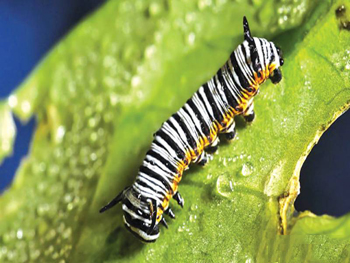Washington, Apr 26: The shopping bag is an infamous source of plastic pollution. The 2010 documentaryBag It' estimated that Americans use 102 billion plastic bags per year. Bags are persistent. Plastic at the waste dump can last for an estimated 1,000 years. And they are pernicious.
 A wild baby manatee named Emoji died in a Florida zoo in February after filling its guts with plastic bags and other litter. To curb our reliance on cheap plastic, Washington began levying 5-cent bag fees in 2009. Several other municipalities have followed suit.
A wild baby manatee named Emoji died in a Florida zoo in February after filling its guts with plastic bags and other litter. To curb our reliance on cheap plastic, Washington began levying 5-cent bag fees in 2009. Several other municipalities have followed suit.
Of course, plastic bags are useful, too.
Federica Bertocchini, a biologist at Spain's Institute of Biomedicine and Biotechnology of Cantabria and a hobbyist beekeeper, used such a bag to collect pests called wax worms. The caterpillars, the larvae of the moth Galleria mellonella, had infested her hives, chowing down on honey and wax.
She plucked the wax worms from the beehives and dropped the caterpillars into a plastic bag — only to find “the worms all around and the plastic bag full of holes,” as Bertocchini wrote in an email to The Washington Post. Bertocchini is an expert in embryonic development, not in caterpillars or things that chew through plastic.
But the accidental discovery was too intriguing to pass up. The scientist contacted her colleagues at the University of Cambridge, Paolo Bombelli and Christopher Howe. “Once we saw the holes the reaction was immediate: that is it, we need to investigate this.”
As the three scientists reported Monday in the journal Current Biology, the wax worms aren't simply chewing the plastic into tiny bits. Instead, it appears that the animals — or something inside them — can digest polyethylene, a common plastic, producing ethylene glycol.
“It was very exciting to find this, mainly because me and Paolo and Chris have been talking about this plastic biodegradation issue for a few years,” Bertocchini said.
Their study was the most recent entry in a growing body of literature that suggests some organisms can process plastic. In 2015, scientists at Stanford University reported that mealworms, the beetle larvae used as fishing bait (and occasionally dusted with barbecue seasoning, as in eco-friendly snacks), can turn styrofoam into carbon dioxide and droppings. In 2016, Japanese researchers discovered that microbes living close to a bottle-recycling plant could metabolise plastic.
Compared with the bacteria found near the recycling facility, “the wax worm is way faster, really faster,” Bertocchini said. (When degrading plastic, though, speed is a relative term.) In the new study, it took 100 worms roughly 12 hours to eat their way through 92 milligrams of plastic, the mass of about three or four grains of rice.
To determine that the true source of wax worm power came from their guts, not their mandibles, Bertocchini and her colleagues reduced the caterpillars to a paste. They spread the stuff on a plastic sample. Over the span of 14 hours, the caterpillar schmear degraded 13 per cent of the polyethylene mass.
Bertocchini speculated that the wax worms' predilection for honeycombs allowed the animals to process plastic. Wax itself is “a complex mixture of molecules”, she said. Wax also contains a chemical bond found in polyethylene. “It may be that for this reason the worm evolved a molecular mechanism to break this bond.”
The new report did not prove that the caterpillars were the responsible organisms. “At this point in time, we do not know if the caterpillars themselves are producing a digestive enzyme or might it be bacteria in their gut,” wrote Bombelli, a biochemist at the University of Cambridge, to The Washington Post. “Or it might be a bit of both!”
(Nor did the study convince all biodegradation experts that animals can fully digest plastic. To the Atlantic, University of Michigan chemical engineer Ramani Narayan, who was not involved with this work, expressed concerns that wax worms could exacerbate problems by leaving tiny plastic crumbs in their wake. “Biodegradation isn't a magical solution to plastics waste management,” Narayan said.)
But the authors of the new study do not envision dumping buckets of larvae over the world's landfills. Instead, they are attempting to home in on the wax worm digestive process. “If one molecule, one enzyme, is responsible for this reaction,” Bombelli said, “we can aim at the isolation of the molecule.”
That would be the first of several major hurdles the scientists would need to clear, to scale plastic biodegradation beyond a caterpillar curiosity. Once the researchers find the responsible enzymes and related genes, they would then need to “understand the optimal enzymatic condition,” Bombelli said. Which is to say, what temperature and other conditions work best for worm-inspired digestion? What's more, an industrial scale requires a “cost-effective way of mass production.” Perhaps, the biochemist said, engineered E. coli, common bacteria found in our own guts, could be coaxed into producing wax worm enzymes.





Comments
Add new comment